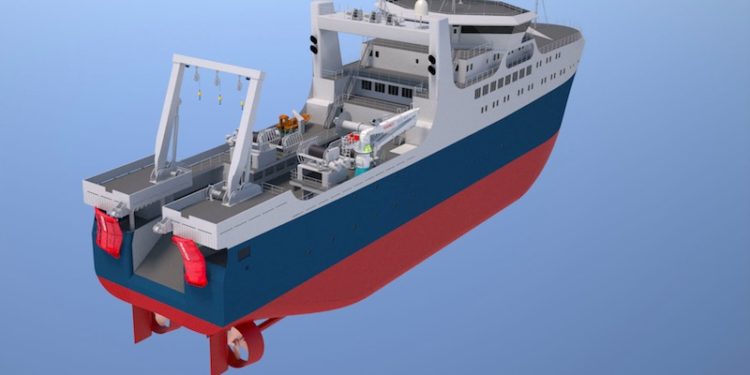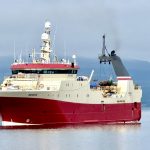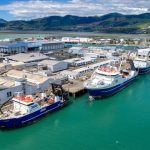The design team at the Faroe Islands branch of Danish naval architect Knud E Hansen has been working on ideas to redefine the classic stern trawler layout that has remained unchanged for many years. According to the design team, the aim is to set new standards for the next generation of deep sea factory trawlers, seeking to innovate systems and adapt new technologies to the long proven concept of stern trawlers.
The design they propose rethinks all of the accepted main features, and their ideas incorporate diesel-electric propulsion consisting of four generators and two electric motors driving a pair of fixed-pitch ducted propellers.
‘The twin slow-rotating electrically-driven propellers almost double the propeller disc area compared to a single propeller design. This generates high torque and very good efficiency,’ the designers state.
‘Having the engine room laid out on one full-length deck significantly improves the practical working conditions for the trawler’s engineers. The extension of the engine room to the full length of the vessel also allows us to move the casings for exhaust and ventilation forward. This results in better working area on the trawl deck aft.’
They also propose having a full-length cargo hold, and the cargo and engine decks change the entire layout concept as such a linear arrangement on these decks opens up new options for functionality and workflow, and use of space throughout the entire vessel.
The deck area in the cargo hold is more than double that of a traditional trawler layout. This also gives a practical working height comparable to the height inside a refrigerated container, improving practical working conditions and safety during fishing and discharging.
The design also features a high bulbous bow and hull shape aft that provides a good flow to the two propellers. The hull is designed for even trim, with the rise of keel built into the keel.
This trawler concept does not have traditional seawater ballast tanks. Instead, it features a ballast keel that apart from the solid weight also can contain 150 tonnes of flow-through seawater ballast.
The full-length trawl deck envisaged in the design is not a new idea, but the vessel’s layout provides more working area aft and the traditional gallows and outhauling systems are replaced with a single hydraulic A-frame.
Accommodation is all located in the superstructure with crew in twenty 15 square metre cabins, and with the layout of passages and six stairwells such that the two working shifts do not need to disturb each other with placement on each side of the vessel.









